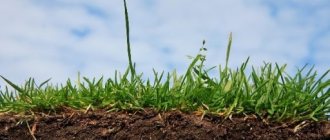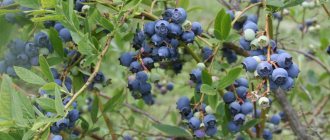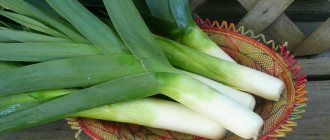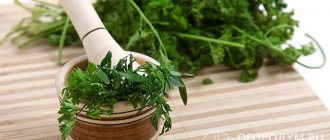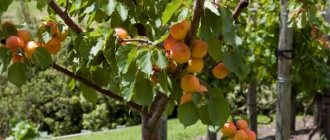Every gardener once has a time when he notices with disappointment that he has begun to harvest a more modest harvest from his garden plot than in previous years. Why did vegetable and fruit crops have a reason to go on a “strike”, because the owners did not take less care of them, and among the abundance of seeds they try to choose the most elite ones for sowing, and water the plants on time?
Often gardeners notice that they carry out all the same manipulations as before, but the end result is not at all pleasing. Why is this happening? Yes, simply because over many years of use the soil begins to lose its fertility, which needs to be periodically restored. How to do it? Read and use our tips!
Problem 1. The thickness of the fertile layer has decreased
If you have been growing plants with a shallow root system in the same place for a long time and skimping on fertilizing, then there is nothing surprising in the thinning of the fertile layer. After all, your green pets probably used all the beneficial substances for growth and development, and you did not apply enough fertilizers that would normalize the situation.
What to do?
Try adding compost to the soil (3 buckets per 1 sq.m.) before digging. This organic fertilizer can significantly improve the quality of “tired” soil by providing plants with the necessary microelements.
Another great way is green fertilizers (green manure). They can be sown between main crops or in vacant areas after the crop has already been harvested. It is best to select green manure in accordance with the needs of the plants that you plan to plant in this area. For example, lupine will be a good predecessor for tomatoes, cucumbers, peppers, eggplants or zucchini. Mustard will help fight nematodes and prepare the soil for planting potatoes or winter crops. It is a good idea to sow rapeseed before carrots or beets, as it will serve as additional protection against viral and bacterial rot.
- What green manures can be sown in the fall after harvesting?
We'll tell you how to improve the soil by planting green manure plants in the fall.
- Green manure: secrets of using green fertilizers
Thanks to green manure plants, you can significantly improve the soil on your site. The main thing is to know how to use them correctly.
And the most suitable green manures for improving “tired” soil are, perhaps, legumes (peas, beans, alfalfa). Nodule bacteria on their roots enrich the soil with nitrogen. And perennial legumes with a powerful root system also extract useful substances from the deep layers of the soil to the surface.
If you do not plan to harvest legumes, but decide to use them as green manure, do not mow the plants before flowering, since nodules form on their roots during this period.
And don't forget about crop rotation. After all, as you know, different plants receive nutrients from different layers of soil. Therefore, if the top layer has become thin and has lost fertility, plant plants with a strong root system.
- Crop rotation, or what to plant next in the garden
Useful information for those who want to harvest a good harvest of vegetables and herbs every year.
Fertilizer application
Fertilizers are applied to the soil before sowing or planting plants (basic application) or during plant growth (feeding). The main application of fertilizers is carried out shortly before sowing or during planting, embedding them into the top, several centimeters thick, layer of soil, using a pitchfork or rake.
When fertilizing, fertilizers are scattered around the plants into moist soil and then lightly worked into the upper part of the soil horizon. When applying over large areas, mechanical spreaders can be used to evenly distribute a given amount of fertilizer over the soil surface.
Some types of fertilizers are produced in the form of soluble powders or solutions and are applied when watering or spraying plants. The action of foliar feeding is usually quite rapid and is applied when the soil is moist. It is best to carry out foliar feeding on cloudy days.
Problem 2: The soil crumbles like dust.
Let's say you are a conservative to the core and prefer to plant traditional vegetables (like cucumbers, tomatoes, cabbage or zucchini) in the beds, which require a large amount of nutrients. At the same time, you avoid fertilizers, believing that the harvest should be environmentally friendly, and you forget about mulching, because your grandparents didn’t do that. But he’s not averse to digging up the soil properly and pumping up his muscles at the same time. And therefore, it is not surprising that after a few years the once fertile soil in your garden begins to absorb moisture poorly and scatters under gusts of wind.
What to do?
You can, of course, replace the top layer of soil, but this is quite expensive.
Try starting with fertilizers. Add 2-3 buckets of compost per 1 square meter, covering it to a depth of 10 cm. This will make the soil heavier and at the same time make it more nutritious.
Pay attention to the type of soil in your area. After all, some types of soil, for example sandy, dry out quickly, retaining almost no moisture, and therefore require special care. It is not recommended to dig them up more than once a year.
- To dig or not to dig: the whole truth about frequent digging of the soil
Experienced gardeners share interesting conclusions on this matter.
- Soil type on site - how to determine and improve the structure
To find out for yourself what type of soil predominates on your site, just carry out a few simple manipulations.
To prevent the soil from becoming dusty, mulch it with available materials, for example, young grass, straw, compost, sawdust, bark, and freshly cut weeds. Mulch will not only protect the soil from further erosion. As it decomposes, it will work as an organic fertilizer, gradually releasing beneficial substances to the crop.
- Everything you need to know about mulch, its types and effects
Caution: not all types of mulch are created equal!
Be careful when mulching the soil with fresh organic matter. In large quantities it can destroy your green pets.
Signs of soil depletion
Soil is an ecosystem that supports the livelihoods of a large number of organisms. Its most important characteristic is fertility. Plants are supplied with all the necessary substances, their development, friendly growth and excellent harvest are ensured. Often the soil loses its fertility in a limited area. This can be caused by various reasons:
- Reproduction of harmful fungi, bacteria - a huge number of microorganisms live in the soil, among which there are both beneficial and pathogenic. Beneficial organisms process organic residues into minerals needed by plants. Thanks to them, the soil is enriched with phosphorus, nitrogen, calcium, iron and other elements important for the full development of plants. Pathogenic organisms destroy not only the beneficial qualities of the soil, but also the root system of plants. They are able to live in the soil for a long time, infecting young crops. The main symptom of the presence of pathogenic microorganisms is the appearance in new plants of signs of the same diseases that were observed in last year’s plantings.
- Changes in soil structure - the soil can become hard, structured, subject to erosion, delaminate into layers, and crack. The soil hardens and is difficult to process. After watering, it dries out quickly and does not retain moisture.
- Depletion – as a result of intensive use, soil can lose its characteristics. As a result, plants become weak and yields are seriously reduced.
All of the above signs indicate one thing - it is necessary to restore soil fertility.
Problem 3: The soil has become too dense
Hard, wet soil that is difficult to push a shovel into may be the result of improper maintenance. For example, if deep digging of clay soils, in which heavy loam appears on the surface, occurs in rainy weather, then a water- and moisture-proof crust may form on top of the ground.
What to do?
Sometimes like is treated like, so before the onset of cold weather the soil can be lightly dug up to a depth of 10 cm. Experienced gardeners believe that if you simply dig, but do not break or turn over clods of earth, then over the winter they will freeze properly and become loose.
If there is clay on the soil surface, you can add sand for digging (1 bucket per 1 sq.m).
It is also worth attracting earthworms to the site. You can, of course, dig them up from your neighbor. But if earthworms are uncomfortable, they are unlikely to stay in your beds.
These invertebrates enjoy decaying organic matter. Therefore, it would be a good idea to mulch the soil around the plants, for example, with rotted compost.
You can feed green pets with dandelion infusion, which will also attract earthworms. To do this, 1 kg of dandelion shoots and roots must be poured into 10 liters of water, and after two weeks, strain and dilute with water 1:10.
This infusion is not recommended for use in beds with cabbage and beets.
- How to use weeds after weeding
Destroying weeds takes a lot of effort and time, and in return often rewards us with pain in the muscles and lower back. Therefore, I want my efforts not to be in vain. In this material we will tell you how to use weeds for good.
Crop rotation
So that plants do not get sick and are not destroyed by pests, and the land rests and is not depleted, crop rotation is needed. By replanting crops one by one in new places, you can improve the quality of the soil. Plants of the same kind have common diseases, so other crops or green manures must be planted instead after 2-3 years. The sowing area is divided into plots, each of which is allocated for related crops. Organic additives are added for pumpkin and cabbage varieties, while mineral supplements are needed for root vegetables and onions. If the territory is small, and it is impossible to organize rest for the land, then they use a fruit changer.
Example of fruit change No. 1:
- 1 section – zucchini, squash, cucumber;
- Section 2 – white cabbage, broccoli;
- Section 3 – peppers, tomatoes, blueberries;
- Section 4 – carrots, beets.
Example of fruit change No. 2:
- 1 ridge – onions, leeks, garlic;
- 2 ridges – zucchini, cucumbers;
- 3rd ridge – daikon, radish;
- 4th row – cauliflower, Chinese cabbage;
- 5th row - tomatoes.
Corn and potatoes can be planted in one place for many years in a row. And after harvesting them, cereals, green manure, and mustard are planted. After the first harvest of potatoes, radishes and garlic are sown. A separate area is allocated for perennial plants; horseradish, asparagus, sorrel, tarragon, rhubarb and other crops are planted on it.
Problem 4. The soil has become acidic
Often the acidity of the soil changes simply as a result of watering. If the water is soft, the acidity of the soil, as a rule, increases, and if it is hard, it decreases. The acidity level is also affected by the plants grown and the fertilizers applied.
What to do?
In this case, liming the soil helps.
| Substance | Application rate |
| Slaked lime (fluff) | With high acidity - 0.5 kg per 1 sq.m., with average acidity - 0.3 kg per 1 sq.m., with weak acidity - 0.2 kg per 1 sq.m. |
| Wood ash | With high acidity - 0.4 kg per 1 sq.m., with medium acidity - 0.2-0.3 kg per 1 sq.m., with weak acidity - 0.2 kg per 1 sq.m. |
| Dolomite flour | With high acidity - 0.5 kg per 1 sq.m., with medium acidity - 0.4 kg per 1 sq.m., with weak acidity - 0.3 kg per 1 sq.m. |
| Chalk | With high acidity - 0.3-0.7 kg per 1 sq.m, with medium acidity - 0.2-0.6 kg per 1 sq.m, with low acidity - 0.1-0.4 kg per 1 sq.m. |
There are a number of plants that do not develop very well in freshly limed soil, so it is advisable to normalize the acidity at least a year before planting them. Such capricious crops include:
- beans,
- peas,
- carrot,
- tomatoes,
- cucumbers,
- pumpkin,
- swede,
- parsley,
- celery.
- Soil acidity: determine and regulate
If your soil is highly acidic, this can seriously harm your plants. How do you know when it's time to take action?
Neutralization of acidic soil
- In arid areas, alkaline soil is more likely to be detected;
- If chernozems predominate in the region, their indicators will be neutral;
- In regions around which there are many rivers, peat bogs and swamps, the soils are acidic!
© d-collection-shop.ru
Plants grow poorly on soils if their values are above pH 7.5 or below pH 5.0. Crops are susceptible to diseases, pest oppression, and poor development in general. Accordingly, even if there is a harvest on the site, it will be quite weak. To a greater extent, this applies to sensitive crops, including lettuces, beets, cabbage, onions and cucumbers.
- Excessive acidity from the soil is eliminated by adding ash, dolomite flour, ordinary chalk or lime;
- To change the alkaline soil to a favorable level, the soil is gypsumed - the addition of ground gypsum!
The compositions are applied to the soil from 100 g/m2 to 300 g/m2, depending on the severity of deviations from the main indicators of neutral soil. The best period for work is autumn and spring. The process is strictly on clean soil. Scattering the selected substance manually or using special equipment, and then digging up the soil on the site so that chalk, gypsum or ash fall to a depth of 15-25 cm. Application is carried out once every 4-5 years to constantly maintain the desired level of acidity!
Problem 5. There is a lot of alkali in the soil
Alkaline soils are not very common. Sometimes an increased alkali content is a consequence of improper agricultural practices. This happens, for example, if you are too carried away by deoxidizing the soil.
Soils with a pH above 7.5 prevent plants from absorbing iron. As a result, your green pets develop less well, which is usually easy to notice by yellowing leaves.
What to do?
You can acidify the soil by mulching with high-moor peat, pine needles or coniferous tree bark.
- Using tree bark in the garden, vegetable garden and flower garden
Tree bark is not only suitable for quickly and effectively lighting a fireplace. It can serve in the garden, vegetable garden and flower garden as an organic mulching material and more.
Mulching also prevents moisture evaporation, weed germination and wind erosion of the soil. It is best to do this in spring or autumn after removing weeds, applying fertilizer and surface loosening.
You cannot mulch the soil before plants sown in open ground have sprung up.
Changing soil pH
Crushed limestone improves the structure of clay soils, causing their particles to bind into conglomerates and thereby facilitating the vertical flow of water. In addition, it regulates soil acidity. The amount of acidity is significant, especially for light sandy soils with their weak water-holding capacity and, therefore, rapid leaching processes. The acidic reaction of the soil inhibits the activity of some bacteria or destroys them. Liming stimulates the process of decomposition of organic matter.
For each plant species there is a certain optimal value of the environmental reaction for its growth and development. It is usually preferable to grow plants that are adapted to the existing soil type, but this may not always be in the gardener's best interests. There is a need to change the pH value of the soil, or its acid-base balance.
Most crops develop better in a neutral environment (pH 6.5-7.0). When changing the pH value, they usually try to get closer to 6.8. Soil with a pH below 6.5 better absorbs macro- and microelements necessary for plants. Slaked lime (calcium hydroxide) effectively reduces soil acidity; this requires a very small amount of lime. It is much more stable than the more expensive quicklime. You can also use cheaper natural limestone - chalk (calcium carbonate). Its advantage is that even application before planting or sowing does not cause any damage to the future harvest.
Liming acidic clay soils and soils with high organic matter requires more lime than acidic sandy soils. The pH value of acidic soils should be determined annually in order to timely compensate for the loss of lime by adding its missing quantities.
Liming is usually carried out in autumn or early winter. The combined use of lime and manure is undesirable, since their interaction releases highly valuable nitrogen into the atmosphere. Incorporation of manure into the soil and liming are usually separated in time, i.e. contribute in different years or create a break of several weeks. Lime left on the surface of the soil will be absorbed into it. There will be no side effects if you lime the area allocated for vegetable crops in the fall, and apply manure on the eve of winter.
Alkaline soils
The initial application of peat and other acidic organic matter reduces the alkalinity of the soil to some extent. Subsequently, sulfur color is added in an amount of 140 g/m2 on sandy soils and 270 g/m2 on heavy ones. To monitor pH, soil tests are performed monthly. At a pH below 6.5, the availability of nitrogen, phosphorus, potassium and molybdenum decreases, and the availability of iron and manganese ions increases. In soils with high pH values, calcium delays the supply of potassium to plants. If the soil is very alkaline, then sulfur is added annually. Nevertheless, in such soil it is better to grow plants that are resistant to an alkaline environment. The drainage system also contributes to the partial removal of excess lime from the soil.
The lack of iron in carbonate soils is compensated by adding solutions of iron chelate, which makes this element more accessible for absorption. Over the course of a year, 3-4 times the dose recommended by the manufacturers is quite sufficient.
On carbonate soils, it is preferable to use fertilizers that exhibit acidic properties, such as ammonium sulfate and bone meal, than nitromel and other alkaline fertilizers.
Problem 6. The soil is salty
As popular wisdom says, “it’s better to under-salt than to over-salt.” If whitish salt traces appear on the soil, most often this indicates improper feeding of plants with mineral fertilizers.
What to do?
Salt, as you know, dissolves in water. After harvesting, try watering the soil deeply several times. There should be plenty of water - up to 15 liters per 1 sq.m., but it is important not to overdo it so that your area does not turn into a dirty puddle.
As soon as the salt goes to the lower layers, mulch the soil with peat.
Light soils on the site
Light soils do not have the best performance due to the rapid loss of water, which also removes nutrients. Accordingly, in the fertile layer, which is about 20 cm, there is no nutrition left for the plants. On the other hand, light soils warm up quickly and retain heat well and have high-quality air exchange.
To stabilize the soil, it is made heavier by adding clay, and the moisture capacity is increased by humus fertilizer. It is good to use compost to increase the nutritional content. Be careful with peat, which can increase the acidity of the soil.
Problem 7. The soil is contaminated with harmful insects and diseases
Insects, bacteria and harmful fungi do not sleep in the summer, populating the site at an accelerated pace. And they sleep in winter - including in the soil, so that next season they can start the battle with you for the harvest again.
What to do?
The easiest way to control insects overwintering on a site is to treat the soil with insecticides. Since a potential threat in the form of eggs and larvae of pests is most often hidden in the ground, the store needs to pay special attention to larvicides that destroy larvae and caterpillars, as well as ovicides that affect the eggs of insects and mites.
- Insecticides: instructions for using drugs against pests
Do you know what drugs can be used to control harmful insects in garden plots? We tell you how not to overdo it and ruin the harvest.
Mechanical methods of struggle will not be superfluous. For example, if you dig up the soil in the beds in late autumn (without breaking up the lumps), the pest larvae will become prey for birds. And some insects simply will not be able to burrow into the ground again and overwinter.
Experienced gardeners believe that if you sprinkle the soil with an EM solution when loosening, this will help weaken harmful bacteria.
It is also important to remove fallen leaves, as pest larvae often overwinter under them.
- Where do garden pests spend the winter and how can you fight them without chemicals?
Find out how to find wintering areas for pests and get rid of the “sleeping enemy.”
In order to cope with diseases, there are also a number of drugs. For example, Alirin-B is a beneficial soil microflora designed to suppress fungal diseases. The drug is compatible with many insecticides, biological products, plant growth regulators and fungicides.
- What are fungicides and what are they used for?
From the article you will learn why you need to treat plants with fungicides and how to apply them correctly.
Planting green manure
Green manure plants contain proteins, sucrose, nitrogen, starch and trace elements: phosphorus, magnesium, calcium, sulfur. Using herbs, they mulch the garden, make compost from green manure, and dig it together with the soil to fertilize the soil. Herbs are grown as an intercrop; the green part and roots are used for fertilizer. The rhizome of plants prevents the soil from becoming too compacted, thanks to which oxygen enters the soil. Sowing grass provides the required mass of organic fertilizers, has a beneficial effect on the growth of bacteria and worms, and improves the structure of the soil.
Plants for green manure:
- legumes – clover, soybeans, lentils, peas, alfalfa;
- buckwheat - buckwheat, rhubarb, knotweed;
- cruciferous vegetables – rapeseed, rapeseed, mustard, oilseed radish;
- cereals – rye, wheat, oats;
- asteraceae - calendula, marigold, cornflower;
- amaranthaceae - beets, spinach, celosia.
Problem 8. The soil is covered with a red coating
Not only metals can “rust,” but also soil and even plants.
- Plant rust - signs of the disease and ways to combat it
Why do plants rust, and is it possible to protect them from this scourge?
If you use hard water with a lot of iron for irrigation, then sometimes it appears on the surface of the soil and between the veins of plants. However, a fungus can also cause the appearance of a red coating on your beds.
What to do?
Usually in such cases, soil free of plants is spilled with boiling water. If this does not help, in the fall you can also use the drug Fitosporin-M (according to the instructions) or its analogue, which also inhibits the effect of pathogenic fungi.
Do not dissolve biological products in tap water, as the chlorine it contains will kill beneficial bacteria. It is best to use melt or rain water.
- Biological products for plant protection: types and methods of application
If the “chemistry” does not help or you do not want to use it on your site.
In the future, it is important to water your green pets only with settled or soft rainwater.
Constant digging damaged the soil structure
Digging is prohibited in areas of wind and water erosion, on sandy soils, and in swampy areas. You should not dig up a garden where the soil is too dry or too wet. If the soil is disturbed, it will not be able to support a large number of crops. Beneficial bioflora will die, this will lead to diseases and a decline in immunity in plants.
If you dig in the heat, most of the beneficial microorganisms will die and the earthen clods will dry out. Even further precipitation may not be enough to restore and saturate the fertile layer. By turning over the layers of soil, bacteria are destroyed, which enrich the soil with nutritional components.
Plowing is harmful to old arable soil or light soil. The soil contains little humus; it is easily blown away and carried by the wind. In this case, the fertile layer must be maintained with the help of green manure rhizomes.
Digging around fruit trees not only destroys the fertile layer, but also cuts off the roots that feed the entire tree. Many fruit trees have roots close to the surface. Damage to the rhizome will cause disease, so you cannot use a hoe or shovel in the garden, especially in areas near tree trunks.

